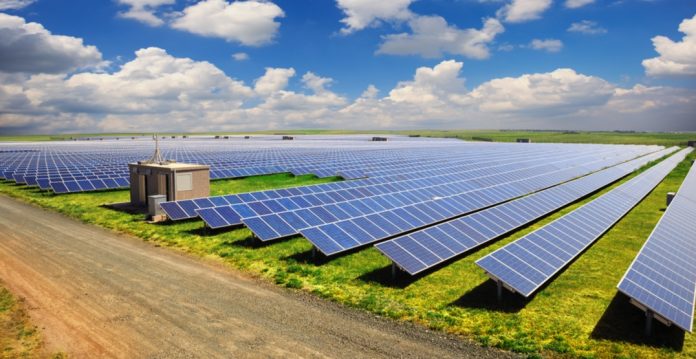*Solar Panels*-The different types you may not know of…

*Inverter Batteries*-What you don’t know about them…
2017-12-02
*Mr Laurent Polonceaux(French Ambassador to Nigeria) says that Nigeria must focus on solar, gas power to improve its GDP*
2017-12-04Solar panels are key components of any solar photovoltaic system which takes the sun’s energy and converts it into an electrical current.
Thank you for reading this post, don't forget to subscribe!They come in different specifications. They also vary in sizes and capacity and are usually built to be water-resistant. Depending on where you choose to put them, they could be placed either horizontal or vertical.
However, there are three major types of solar panel currently in commercial production – all of which are silicon based namely:
Monocrystalline Cell-Based Panel
Monocrystalline panels have high power output, occupy less space, and survive the longest. Of course, that also means that they are the most expensive of the bunch. This type of solar panel produces up to four times the amount of electricity as thin-film solar panels.
Monocrystalline solar panels live the longest. Most solar panel manufacturers put a 25-year warranty on their monocrystalline solar panels.
They perform better than similarly rated polycrystalline solar panels at low-light conditions.
Another advantage to consider is that they tend to be slightly less affected by high temperatures compared to polycrystalline panels.
Polycrystalline Cell-Based Panel
This type of solar panel is made from solar cells comprising of thin wafers of silicon cut out from artificially grown crystals. Instead of their source being single crystals, these cells are made from multiple interlocking silicon crystals grown together. This makes them cheaper to produce, but their efficiency level is lower than the monocrystalline solar cells which is currently 13-18% .The process used to make polycrystalline silicon is not complex and cost less. The amount of waste is less compared to monocrystalline’s.
Polycrystalline solar panels tend to have slightly lower heat tolerance than monocrystalline solar panels. This technically means that they perform slightly worse than monocrystalline solar panels in high temperatures. Heat can affect the performance of solar panels and shorten their lifespans. However this effect is minor and most homeowners do not need to take this into account.
Thin-Film Based Panel
Depositing one or several thin layers of photovoltaic material onto a substrate is basically how thin-film solar panels are manufactured. They are made from a component known as thin-film photovoltaic cells (TFPV). They can be categorized by the photovoltaic material deposited onto the substrate:
- Amorphous silicon (a-Si)
- Cadmium telluride (CdTe)
- Copper indium gallium selenide (CIS/CIGS)
- Organic photovoltaic cells (OPC)
As a matter of fact,mass-production of this type of panel is not very difficult. Hence,they are cheap to manufacture than crystalline-based solar panel. Their homogenous appearance makes them look attractive. In situations where space is not an issue, thin-film solar panels would make a lot of economic sense for households.
Thin-film solar panels are not popularly used in most residential buildings because of space constraint. Although cheap,they consume a lot of space. Due to this fact, the cost of PV-equipment (e.g. support structures and cables) is on the increase too.
Thin-film solar panels tend to depreciate faster than mono and polycrystalline solar panels. And that is why they typically come with a shorter warranty.
If you would like to know more about them and their blend with different system plans available,click here…
.




